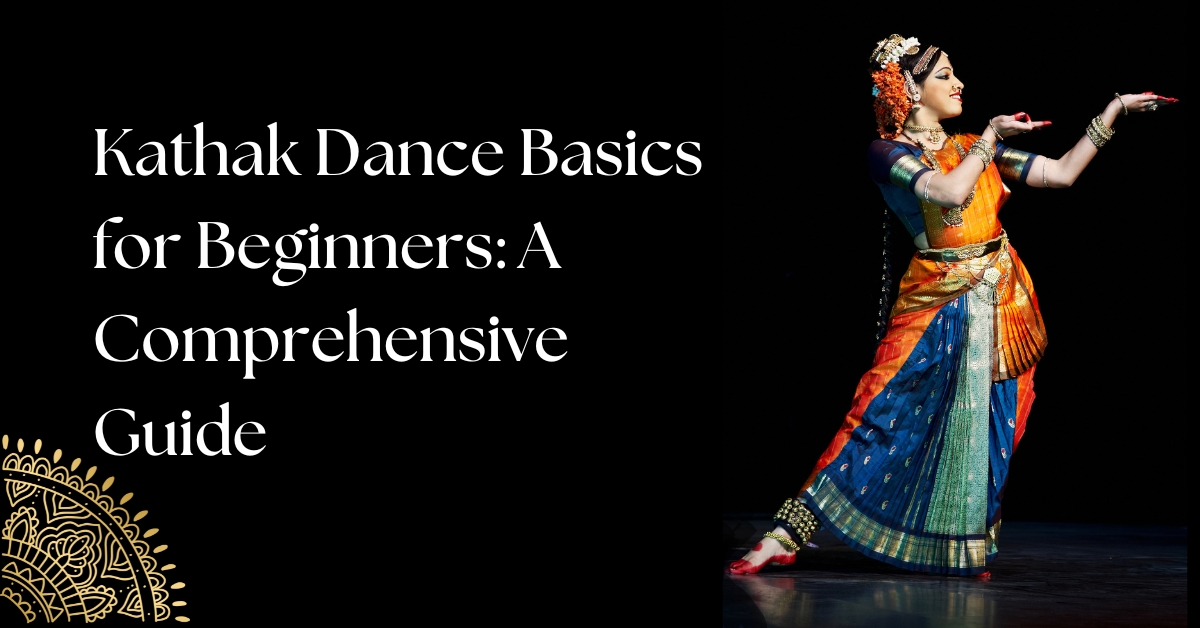Kathak Dance Basics for Beginners : A Comprehensive Guide
Kathak, one of the eight classical dance forms of India, is a mesmerizing art form that tells stories through intricate footwork, graceful movements, and expressive gestures. Originating from the northern regions of India, Kathak has evolved through centuries, blending traditional storytelling with rhythmic and dynamic elements. If you are a beginner eager to learn Kathak, this guide will introduce you to its history, foundational techniques, and essential tips to start your journey in this beautiful dance form.
A Brief History of Kathak
Kathak derives its name from the Sanskrit word ‘Katha,’ meaning story, and ‘Kathakar,’ meaning storyteller. It traces its origins to the temples of ancient India, where it was performed as a devotional act to narrate stories from Hindu epics such as the Ramayana and Mahabharata. Over time, Kathak was influenced by Persian and Mughal cultures, leading to the development of its modern form, which beautifully integrates Hindu and Islamic artistic traditions.
Today, Kathak is primarily divided into three main gharanas (schools):
- Lucknow Gharana – Emphasizes expression and grace.
- Jaipur Gharana – Known for its strong footwork and intricate rhythm patterns.
- Banaras Gharana – Features a mix of both expression and rhythmic complexity.
Basic Elements of Kathak
1. Tatkar (Footwork)
Tatkar refers to the intricate footwork performed in Kathak. Beginners start with basic rhythmic patterns, usually set to Teentaal (16 beats) or Jhaptaal (10 beats). The most fundamental tatkar sequence is: Ta Thei Thei Tat, Aa Thei Thei Tat
2. Hastak (Hand Movements)
Hand gestures, known as Mudras, play a vital role in expressing emotions and storytelling in Kathak. Some commonly used mudras include:
- Pataka (flat palm)
- Tripataka (three-finger gesture)
- Katakamukha (opening and closing of fingers like a lotus bud)
3. Chakkars (Pirouettes)
Chakkars are fast spins that add dynamism to the dance. Kathak dancers often execute multiple turns with precision and grace, using control and balance to maintain the rhythm.
4. Abhinaya (Expression)
Expression, or Abhinaya, is an integral part of Kathak. It involves facial expressions and body language to convey emotions. Navarasa (nine emotions), such as love, anger, joy, and sorrow, are essential in Kathak storytelling.
5. Tukras, Todas, and Parans
These are short rhythmic compositions performed within a taal cycle:
- Tukras and Todas – Intricate sequences of footwork and hand movements.
- Parans – Compositions incorporating syllables from Indian percussion instruments like the tabla and pakhawaj.
Basic Postures and Stances
Kathak maintains a natural and elegant posture. Beginners must practice the following foundational stances:
- Sama Position: Standing straight with feet together and hands in a relaxed position.
- Araam Mandali: A semi-bent knee posture, essential for performing tatkar.
- Mudras and Anga Shuddhi: Refining hand movements and ensuring graceful body alignment.
Understanding Rhythm and Taal in Kathak
Taal (rhythmic cycle) is the backbone of Kathak. Beginners start with simple taals like:
- Teentaal (16 beats)
- Jhaptaal (10 beats)
- Rupak (7 beats)
The ability to keep time and synchronize movements with beats is essential for mastering Kathak.
Essential Attire for Kathak Practice
For practice sessions, students typically wear:
- Salwar-kameez, churidar with a dupatta, or a lehenga-choli – Ensuring comfort and ease of movement.
- Ghunghroos (ankle bells) – Introduced gradually to enhance rhythmic precision.
Tips for Beginners to Master Kathak
- Start with Basic Footwork: Mastering tatkar is crucial before advancing to complex sequences.
- Focus on Hand and Eye Coordination: Syncing hand gestures with expressions enhances storytelling.
- Practice Chakkars with Control: Spinning requires balance and agility, so start slow before increasing speed.
- Understand the Importance of Expression: Kathak is not just about technique; storytelling through facial expressions is equally important.
- Listen to Classical Music and Rhythm Patterns: Developing a keen sense of taal and laya (tempo) helps in synchronization.
- Stay Consistent and Patient: Like any classical art form, Kathak requires dedication and regular practice.
Conclusion
Kathak is a mesmerizing classical dance form that beautifully weaves together rhythm, expression, and storytelling. For beginners, mastering the fundamentals and committing to regular practice can pave the way for a rewarding journey in this art. Whether you aspire to perform on stage or simply learn Kathak as a passion, immersing yourself in its essence will enhance your artistic and cultural experience.
So, fasten your ghungroos, step into the rhythm, and begin your Kathak journey with grace and dedication! If you’re looking for expert guidance, explore the best Kathak dance classes near Sharjah, Dubai learn from experienced instructors.
Most Recent Posts
Category
Explore Our Services
Join our fun and engaging dance, music, and art classes for all ages!





